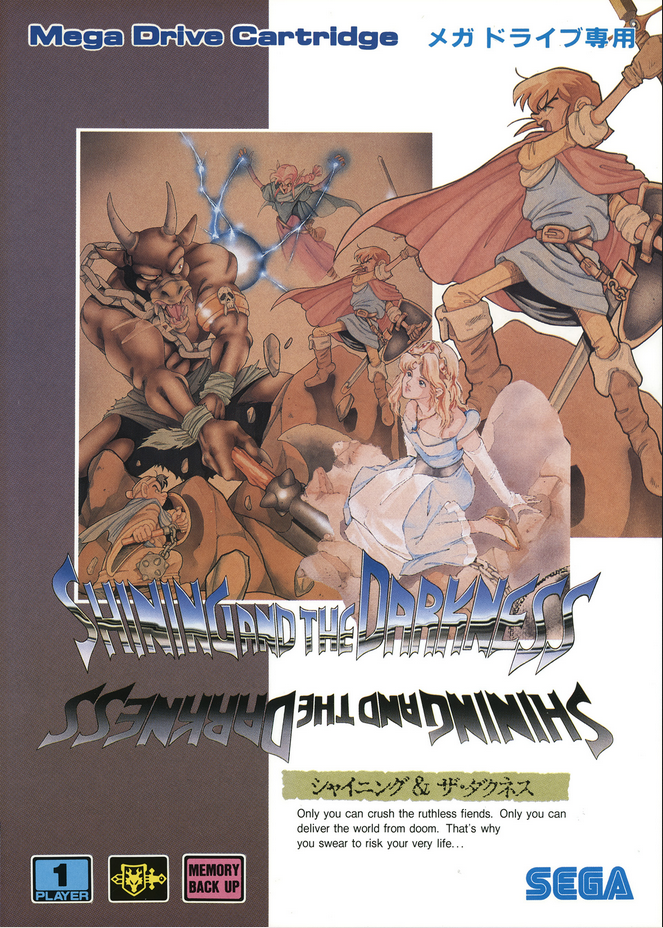
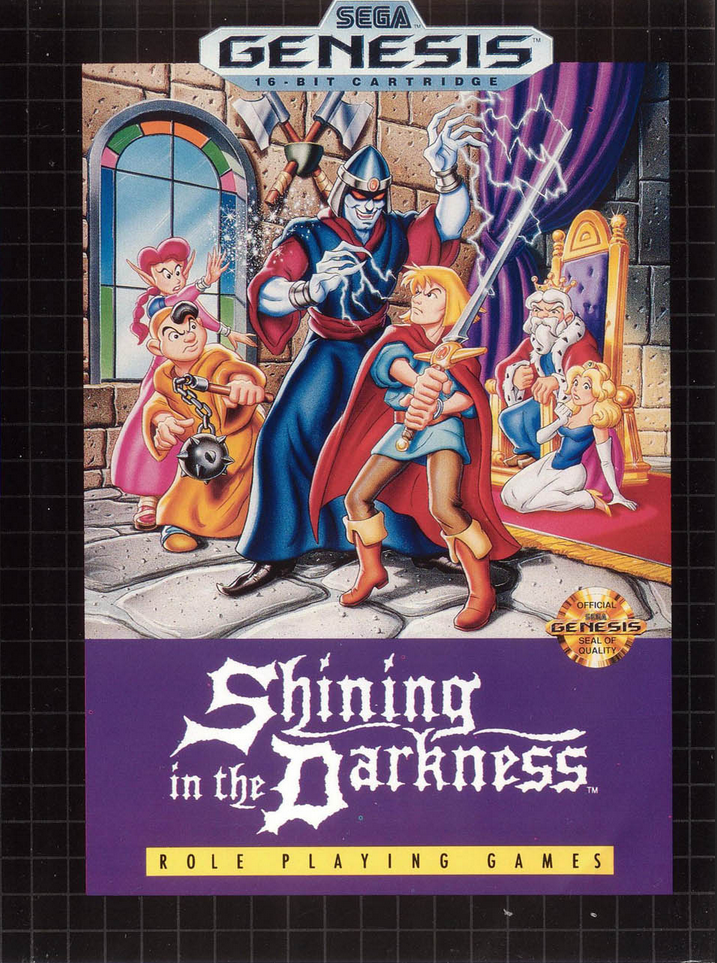
PUBLISHED: Sega
DEVELOPED: Climax Entertainment
RELEASE DATE: 03/29/91 – (JP), 10/1991 (US, EU)
Shining in the Darkness shouldn’t be as good as it is. A thirty-year-old dungeon crawler that’s heavy on random battles and exploring extensive labyrinths and caves should be a rotten retro slog. And yet, here I am, declaring that this inaugural entry in Sega’s Shining... series is the best Genesis RPG I’ve ever played. Better than Phantasy Star II and III. Considerably better than Super Hydlide. Perhaps this declaration will shift at some point; Phantasy Star IV still awaits, after all. For now, I’m as shocked as anyone: Shining in the Darkness does indeed shine bright like a diamond.
Shiny Beginnings
You play the son of Mortred, a knight in the kingdom of Thornwood. Both you and Mortred are knights, in fact, but Mortred works for King Drake and you – the unnamed son – are presumably shoveling manure in a pasture somewhere, waiting for an assignment. When Mortred and the king’s daughter Jessa disappear, however, you gladly drop your shovel, change clothes, and volunteer to rescue both Jessa and your father.
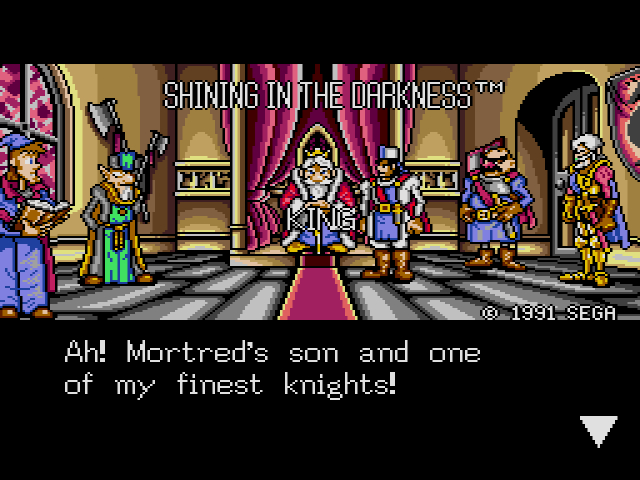
Once in front of King Drake and his advisers, you’re entrusted by the king with rescuing Jessa and Mortred, despite your inexperience. Suddenly, the evil sorcerer Dark Sol appears, implies that he’s kidnapped Jessa (without saying anything about Mortred) and gives King Drake an ultimatum: give the kingdom to Dark Sol and he can have Jessa back. Drake is shaken, but unwavering in his resolve to make a Knight of you. Your tasks remain: explore the Labyrinth, conquer the trials in the caves, and find Jessa and, hopefully, your father as well.
The Meat
Imagine the claustrophobic first-person dungeons in the original Phantasy Star expanded into their own full-length experience: that’s Shining in the Darkness. The Labyrinth and the various caves are evocative, moody and dripping with rich, unsettled atmosphere. They beg you to explore every inch of their gloomy halls, even as difficult enemies drive you back into the safe sun-drenched town.

Yes, labyrinths and caves aren’t empty places, alas. As with Phantasy Star, all navigation and enemy encounters are in first-person mode. While the enemies aren’t as richly detailed in Shining… as they are in Phantasy Star, their designs are still fantastic and even unnerving. You haven’t lived until you’ve wrestled with Punkinheads, Clodhoppers, and other unholy abominations. The fights move quickly, which is merciful given how many enemy encounters you’ll have throughout the course of the game. Slay enemies with a weapon, fell them with magic, or heal yourself/use an item. The fight menu options might seem limited, but all are necessary; nothing extraneous.
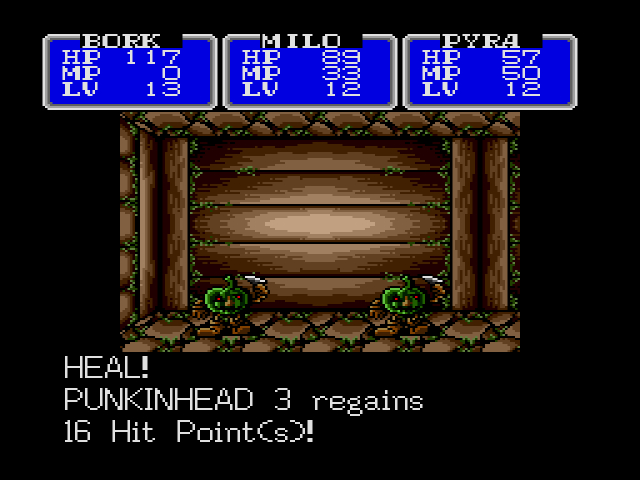
The further you explore in the caves, the more experience you’ll get, the more gold you’ll receive. As you level up and expand your gold sack, you’ll return to the town and buy stronger weapons and armor. You’ll also need to save at the chapel and spend the night at the tavern/inn to boost your health.

After a few hours of dungeon-romping, two spellcasters, Milo and Pyra, invite themselves into your party. Since you are a hulking hunk of beef with zero magical abilities, both Milo and Pyra’s presence in your party is welcome. Pyra offers attack, status changing, and healing spells, while Milo has both healing and attack spells. In most RPGs, I usually figure out which are the two or three best spells, then spam them for the rest of the game. This is not the case in Shining…. Almost every spell in Pyra and Milo’s arsenal is needed at some point in the game.
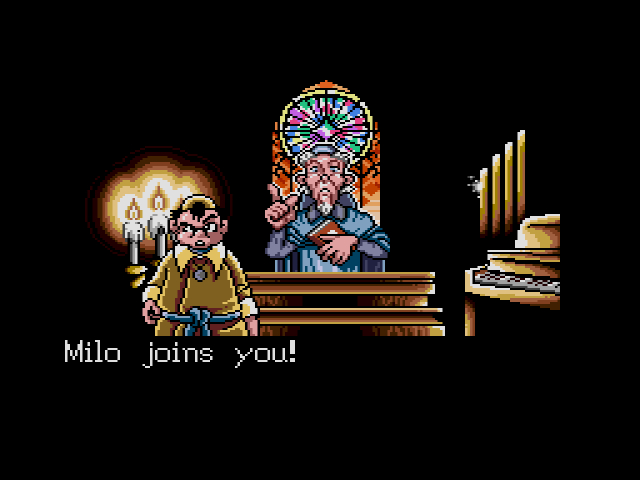
Make no mistake: Shining in the Darkness is a hard game that only gets harder. Higher levels for your characters don’t make you feel more powerful. They just ensure that you can stay alive long enough to rescue Jessa. Even if you’re using a guide and some maps to get you through, you’ll have to watch your stats constantly as you fight deeper into the Labyrinth. Even some of the weaker enemies can use spells that drastically reduce your health. Find yourself in a battle with six Dark Jellies and you might have a problem if they all decide to cast Freeze. Thankfully, Angel Feathers can warp you out of the darkness back to the town at any time, if need be.
The Legacy
Rather than making a big-budget RPG like Sword of Vermilion that tries to do much and fails at most of it, Climax Entertainment hones in on two main elements – exploring and battling – at the expense of everything else. This might have more to do with the game’s shoestrong budget than any conscious development decision. In this case, lack of funds work to the game’s favor. Both exploring and battling are so refined, intuitive, and enjoyable that I never found myself wishing the game had more to its simple structure. Shining in the Darkness is limited, yes, but its focused limitations elevate it above its bogged-down ambitious RPG predecessors.
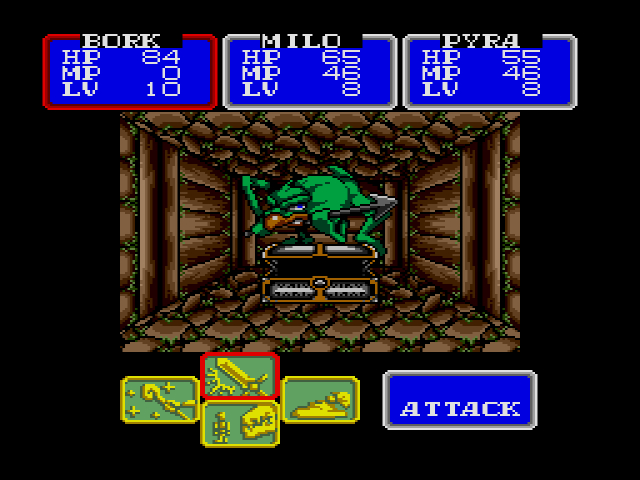
Imagine playing Shining in the Darkness in 1991. As you move through each dungeon/cave, you draw straight lines on your graph paper, carefully filling out your map for each unique section. Alternating between map-making and enemy encounters proves tiresome, but rewarding, as does finding secret treasures past swamps that suck your MP. There’s no safety in save states. Rather, you have to enter and exit the cave to go to the chapel each time you want to save. And while the manual does show which weapons/armor are suitable for each party member, it’s up to you to figure out how best to suit up your team. Trial-and-error rules the day here.

Shining in the Darkness is the kind of addictive, fulfilling and rewarding experience that I crave and rarely find. On the surface, it’s little more than another ancient dungeon-crawler. Some clunky menu navigation aside, however, the game has aged remarkably well. Shining’s… gameplay loop – dungeon, battles, gold, experience, town, buy better equipment, repeat – still satisfies today and remains enough to keep me exploring the next chunk of Labyrinth and beyond.
A-

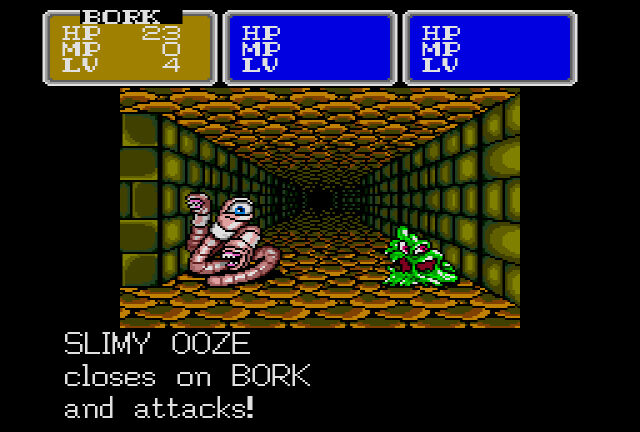
2 replies on “Shining in the Darkness (Genesis, 1991)”
Hey Dylan, I didn’t know you’d returned to this blog. Great to see you still writing and making your way through 1991. Can’t wait to see what you make of Earnest Evans…
You’ve inspired me to give Shining in the Darkness another go. I played it shortly after it was first released, but I didn’t bother trying to make maps and eventually got hopelessly lost. I always loved how much personality it had though.
You’ve got some RPG (and RPG-adjacent) treats to look forward to though: Warriors of the Eternal Sun, Rings of Power, Landstalker, and of course the Shining Force games are all great. I think the Mega Drive RPG library is under-rated – it might not rise to the polished heights of the SNES library but I think it makes up for that with sheer charm, inventiveness and variety.
Hey Rom! Good to hear from you!
I was reviewing in earnest for a few months in 2023, but I haven’t reviewed much in awhile, unfortunately. Perhaps soon! In the meantime, you can find me here
Shining in the Darkness still holds up, if you don’t mind a bit of a grind and either map-making or browsing maps on GameFAQs. Lots of personality, indeed!
I am looking forward to experiencing the Mega Drive RPG/strategy titles, particularly the Shining Force games (heard nothing but great things) and Landstalker. Lord willing, I’ll get there!
Thanks again for the comment, buddy, always nice to hear from you.